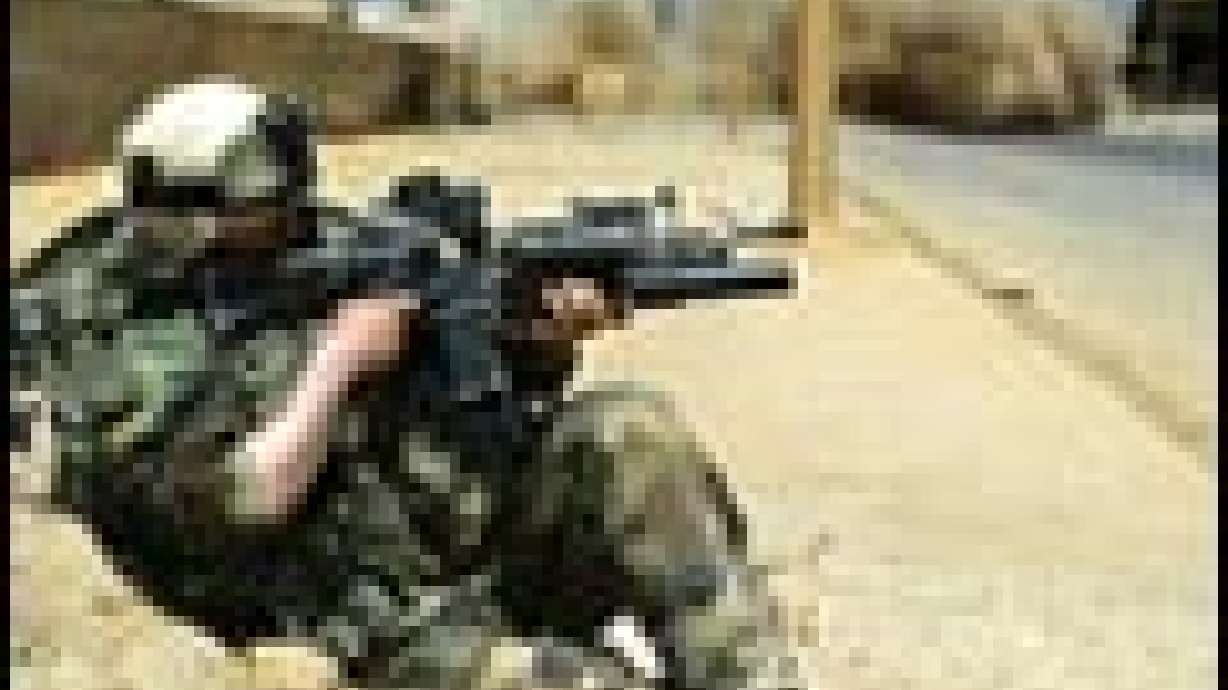Estimated read time: 3-4 minutes
This archived news story is available only for your personal, non-commercial use. Information in the story may be outdated or superseded by additional information. Reading or replaying the story in its archived form does not constitute a republication of the story.
CAMP AS SAYLIYAH, Qatar (AP) -- U.S. forces are fighting for control of a military airport in southeast Baghdad as they encounter pockets of unconventional, and at times intense, resistance throughout the capital area, an American general said Tuesday.
U.S. Marines are on the grounds of the Rasheed Airport after destroying Iraqi tanks and armored personnel carriers to cross the Diala River, Brig. Gen. Vincent Brooks said.
"There was resistance, most of it leading to it, and there's also resistance beyond it," Brooks said during the daily Central Command briefing in Qatar.
The airport is in a "militarily significant" area between the Diala and Tigris rivers, he said. Taking the airfield would aid efforts to secure the Iraqi capital -- and prevent the escape of high-ranking Iraqi officials -- as forces loyal to Iraqi President Saddam Hussein turn increasingly to fierce urban combat, Brooks said.
During the fighting, a coalition A-10 "Warthog" warplane was shot down by a surface-to-air missile. The pilot ejected safely and was recovered by U.S. ground forces near the airport.
A Central Command official, speaking on condition of anonymity, said it appears that the plane was shot down by an Iraqi missile, and not friendly fire.
U.S. forces are also fighting north of Baghdad, with units of the Army's V Corps, with small pockets of resistance elsewhere in the capital and east of Karbala.
Some of the fighting, Brooks warned, is intense urban combat that can result in deaths and injuries to civilians and bystanders in incidents similar to the one in which two journalists were killed when U.S. troops fired on the Palestine Hotel after receiving fire from the building.
"We know that as we conduct operations inside of Baghdad we should anticipate attacks from unexpected locations, that some of the military actions might be unconventional in nature, whether it's the use of car bombs or whether it's ambushes, the use of snipers, or certainly the consistent pattern we've seen elsewhere of using civilians as shields," Brooks said.
"We can only be reminded that the risk increases for the population as we do these operations," he added later. "But we have to remain focused on our objective of removing this regime before there's greater loss of life."
At times, the Iraqi forces include formations of 20 to 60 vehicles, including T-72 tanks or civilian trucks outfitted with military weapons. "Often, all of those vehicles are destroyed -- any vehicles that are encountered," Brooks said.
Parts of the V Corps remained in the center of Baghdad overnight. Other V Corp units carried out attacks Tuesday morning from the south and from the north of the city -- battling Iraqi tanks, armored vehicles, artillery and armed civilian vehicles.
It remained unknown whether Saddam and his sons were alive. On Monday, a U.S. warplane dropped four bunker-buster bombs and blasted a smoking crater 60 feet deep at a restaurant where they were believed be meeting.
"Like other places, it is possible that we may never be able to determine exactly who was present without some detailed forensic work," Brooks said. "That's one of the circumstances that we have to deal with as we go through this campaign."
(Copyright 2003 by The Associated Press. All Rights Reserved.)









